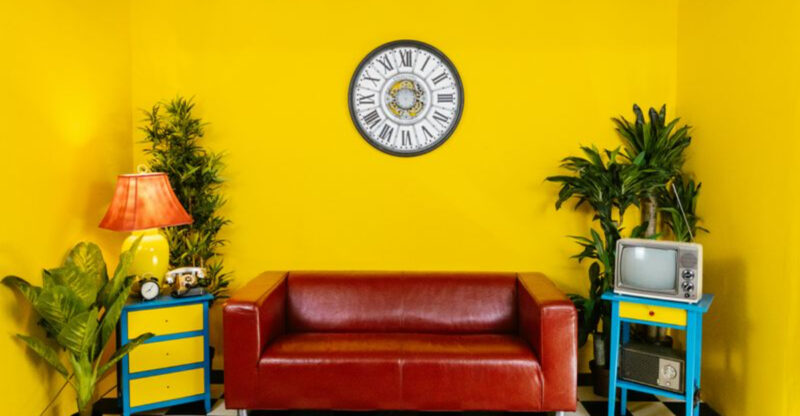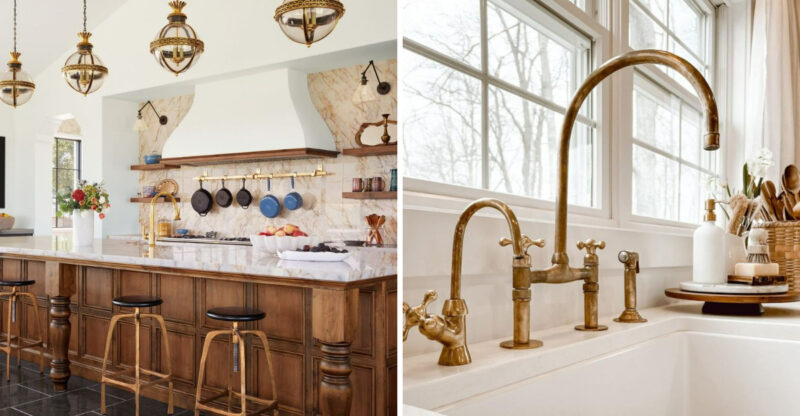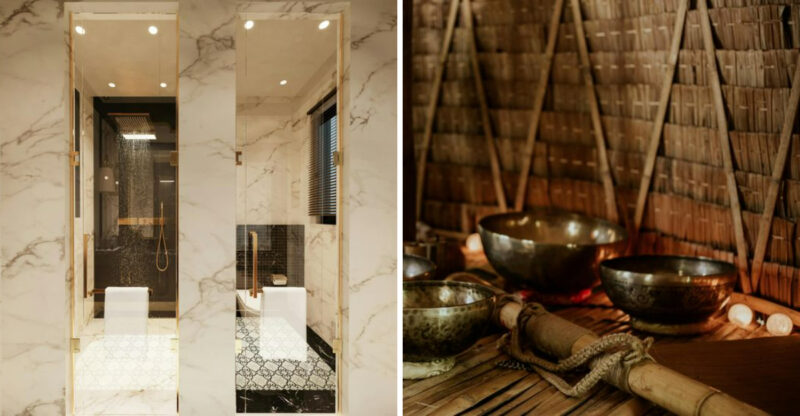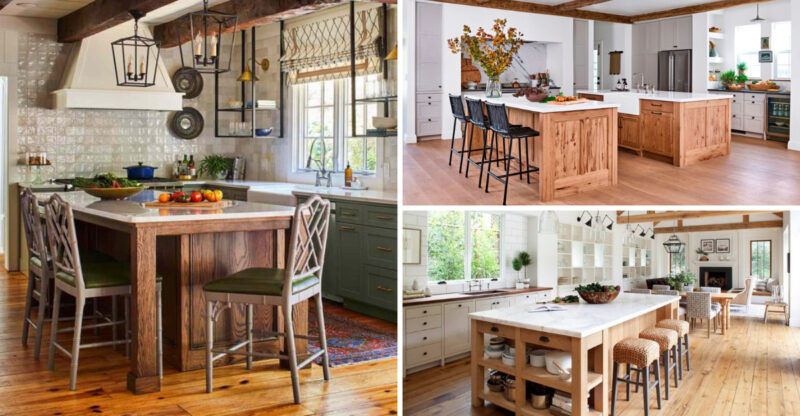13 Wisconsin Dining Rooms That Could Be Losing Their Style
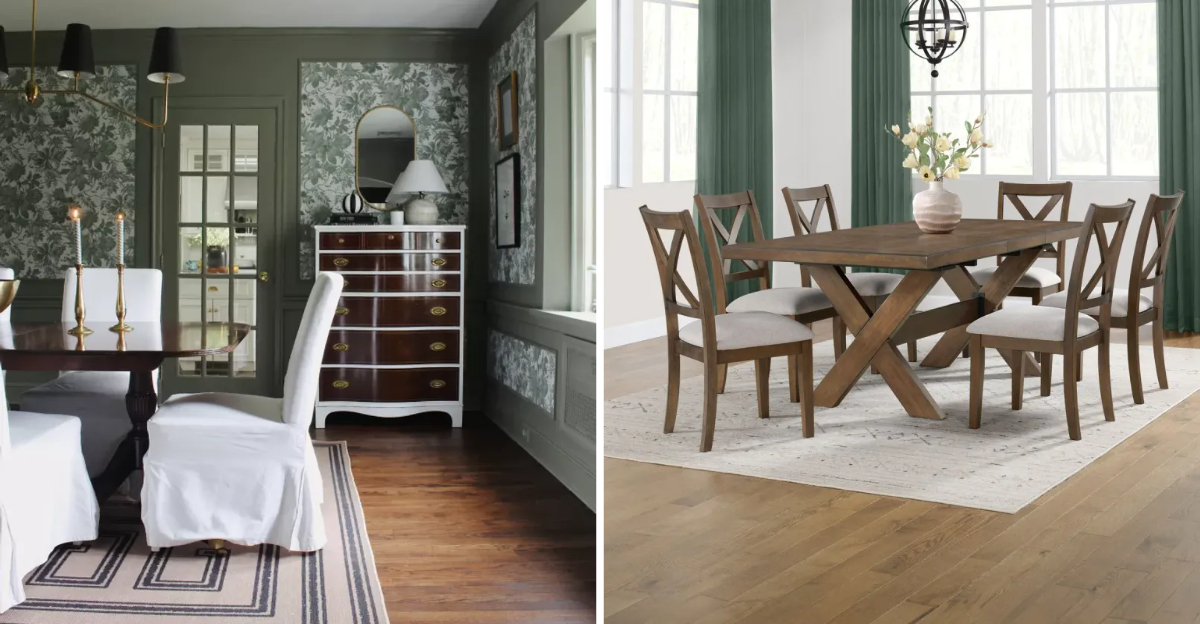
Wisconsin homes often reflect our practical Midwestern values, but some dining room trends have quietly slipped from stylish to dated.
I’ve noticed certain elements that once defined elegant Wisconsin dining spaces now make rooms feel stuck in time. Ready for a fresh perspective on your eating area?
Let’s explore which dining room features might be holding your space back from its full potential.
1. Dark Wood-Heavy Dining Sets
Those massive mahogany dining sets that dominated Wisconsin homes in the 1990s are weighing rooms down visually. Heavy, ornately carved tables with matching chairs and hutches create a formal, almost stuffy atmosphere that feels out of sync with today’s more relaxed lifestyle.
Many homeowners are now opting for lighter woods or painted pieces that brighten the space. Mixed materials like wood with metal accents offer a more contemporary feel without sacrificing warmth. Even keeping the dark wood table but swapping out some chairs can make a dramatic difference.
If you love your heirloom set, consider refinishing just the tabletop in a lighter stain while keeping the legs dark for an updated two-tone look that preserves the piece’s character.
2. Overly Ornate Chandeliers
Remember those crystal and brass chandeliers with dozens of dangling prisms? While once the height of dining room luxury across Wisconsin, they now read as fussy and high-maintenance. The intricate designs collect dust in hard-to-reach places and cast shadows rather than properly lighting your beautiful meals.
Modern lighting favors cleaner lines and more purposeful designs. Drum pendants, simple geometric fixtures, or even a series of smaller hanging lights provide better illumination while making a more contemporary statement. The right lighting should enhance your food and conversations, not distract from them.
If you’re attached to your crystal showpiece, consider rewiring it and removing some of the more ornate elements for a streamlined version of the original.
3. Mismatched Chairs Around a Table
What started as a charming farmhouse trend has sometimes morphed into visual chaos. Randomly assembled chairs of different heights, styles, and materials can make your Wisconsin dining room look like a furniture garage sale rather than a curated space.
The key to successful chair mixing is finding a unifying element perhaps all chairs share the same color, material, or general silhouette. Without this thoughtful approach, the dining area feels unsettled and temporary. Even restaurants that pull off the mixed-chair look do so with careful planning.
For a refresh that maintains character, try keeping your favorite two chair designs and using them in an alternating pattern, or use identical chairs with one or two special “host” chairs at the table ends.
4. Heavy Drapes or Curtains
Those floor-to-ceiling velvet or brocade drapes with swags, jabots, and tiebacks are drowning Wisconsin dining rooms in fabric. Heavy window treatments block natural light and make rooms feel smaller and stuffier, especially during our long winters when sunlight is precious.
Lighter window treatments like simple panels, Roman shades, or even bare windows with decorative molding let more light in and create an airier feel. Natural materials like linen or cotton in solid colors or subtle patterns offer texture without overwhelming the space.
When privacy isn’t a concern (as in many dining rooms that face backyards), consider leaving windows undressed entirely or using minimal treatments that frame rather than cover the view, connecting your dining experience to Wisconsin’s beautiful outdoors.
5. Busy Patterned Wallpaper
Wild floral prints and dense patterns once covered Wisconsin dining room walls, creating visual overload that fights with everything else in the room. These busy backgrounds make artwork disappear, table settings seem cluttered, and peaceful meals nearly impossible.
Today’s wallpaper trends favor subtler patterns, textural solids, or feature walls that add interest without dominating. Even vintage-inspired papers now come in more restrained designs that honor traditional patterns without overwhelming the senses.
If you’re not ready to strip all that paper, consider painting over just one or two walls with a complementary solid color drawn from the wallpaper. This creates a more balanced space while maintaining some of the pattern’s character and saving you the headache of removing wallpaper from every surface.
6. Outdated Built-In Buffets
Many Wisconsin homes feature those built-in buffets with mirrored backs and glass-front cabinets that haven’t been updated since the Packers’ Ice Bowl. While built-ins offer valuable storage, their dated finishes and awkward proportions can anchor your dining room firmly in the past.
Modernizing these features doesn’t require demolition. Simply removing doors for open shelving, painting the interior a contrasting color, or replacing mirrored backs with beadboard can transform these pieces. Hardware updates swapping ornate handles for simple knobs or sleek pulls make a surprisingly big difference.
For a more dramatic change without construction, try removing some doors entirely and using the buffet as a display for a curated collection or serving station, blending storage with style in a way that feels intentional rather than inherited.
7. Cluttered Table Decor
Wisconsin dining tables sometimes disappear under permanent layers of decorative items candle collections, artificial flower arrangements, and seasonal tchotchkes that never get put away. When every inch of table surface is covered, there’s hardly room for actual dining, and the visual noise creates stress rather than welcome.
A thoughtfully styled table might feature one centerpiece that can be easily moved during meals. Scale matters too oversized arrangements that block sight lines across the table discourage conversation and connection.
Consider rotating seasonal items rather than displaying everything at once. A single beautiful bowl of local Wisconsin apples or a small arrangement of fresh flowers from your garden makes a more elegant statement than multiple competing decorative elements that gather dust and complicate table setting.
8. Worn Area Rugs Under the Table
Faded, stained, or fraying rugs beneath Wisconsin dining tables tell the tale of countless spilled drinks and dropped food. While area rugs can define dining spaces beautifully, worn examples instantly date a room and can even become tripping hazards as edges curl and backing deteriorates.
Hard-wearing natural fibers like sisal or jute offer texture without showing every spill. Indoor-outdoor rugs provide practically bulletproof durability for families. If you prefer the softness of wool, consider darker patterns that disguise inevitable dining mishaps.
The right size matters too a properly proportioned rug should extend at least 24 inches beyond the table edge on all sides, allowing chairs to remain on the rug even when pulled out. This prevents the annoying “chair leg catching on rug edge” problem that plagues many Wisconsin dining rooms.
9. Glass-Top Tables With Minimal Support
Those glass dining tables balanced on skinny pedestals or delicate metal frames were Wisconsin dining room staples in the 80s and 90s. While they promised visual lightness, they’ve aged poorly showing every fingerprint, wobbling during meals, and creating an unsettling feeling of instability.
Today’s glass tables, when used, typically feature thicker glass and more substantial bases. Many homeowners are moving away from all-glass tops entirely, preferring the warmth of wood or the practicality of stone surfaces that don’t show every smudge and water spot.
If you love the brightness glass brings to your Wisconsin dining room, consider tables that incorporate glass with other materials perhaps wood frames with glass inserts or stone bases with glass tops creating more visual interest and practical durability than the floating-glass look that now feels distinctly dated.
10. Overly Large Dining Tables for the Space
Massive dining tables that barely leave room to walk around them dominate many Wisconsin dining rooms. These oversized pieces were chosen for hosting holiday gatherings that happen a few times yearly, while making everyday meals feel formal and navigation difficult the other 360 days.
Smart homeowners are embracing appropriately-sized tables with extension options. Drop-leaf designs, butterfly extensions, or tables with removable leaves provide flexibility without sacrificing daily comfort. Proper spacing at least 36 inches between the table edge and walls or other furniture allows for comfortable movement.
If your dining room serves multiple purposes (like many Wisconsin homes where dining areas double as homework stations or home offices), consider a round table instead of rectangular. Round tables facilitate conversation, fit more people in tight spaces, and eliminate sharp corners in high-traffic areas.
11. Vinyl or Laminate Flooring That Looks Cheap
Older vinyl or laminate floors with obvious fake wood patterns or dated tile imitations instantly bring down Wisconsin dining rooms. These materials often develop visible wear patterns, peeling edges, and faded sections that no amount of furniture rearranging can hide.
Today’s engineered flooring options offer dramatically improved realism and durability. Modern luxury vinyl planks and high-quality laminates feature convincing wood textures, water resistance, and comfort underfoot that older versions couldn’t match. Natural materials like hardwood or tile remain classic choices for dining areas.
If replacement isn’t in your budget, large area rugs can cover the worst flooring sins while adding warmth and style. Just ensure the rug is properly sized too small, and it becomes a floating island that makes the cheap flooring even more noticeable around the edges.
12. Faded Paint Colors on Walls
Those once-trendy Wisconsin dining room colors hunter green, mauve, or Tuscan gold have faded into dingy, dated backgrounds that make even fresh decor look tired. Paint that’s visibly scuffed, marked with furniture outlines, or discolored from years of cooking vapors creates a neglected atmosphere no matter how nice your table setting.
Fresh paint remains the most affordable high-impact change for dining rooms. Current trends favor either true neutrals (whites, grays, taupes) that create versatile backgrounds, or rich, saturated colors that make intentional statements rather than following passing fads.
Wisconsin’s natural landscape offers perfect color inspiration the soft grays of winter skies, warm taupes of fieldstone, or deep blues of our lakes create timeless backgrounds that won’t look dated next year. Even repainting in the same color can transform a space if the existing paint has deteriorated.
13. Plastic or Metal Folding Chairs Used Regularly
Nothing says “this dining arrangement is temporary” quite like plastic or metal folding chairs used for everyday meals. Many Wisconsin homeowners intended these as stopgap seating but never upgraded, leaving families perched uncomfortably on chairs designed for occasional use only.
Proper dining chairs should provide comfort for the average meal length (20-30 minutes) with appropriate height for the table. The chair seat should be about 12 inches below the tabletop for comfortable dining. Materials should be durable and cleanable especially important for Wisconsin families with children or for homes that entertain frequently.
If budget constraints have kept those folding chairs in place, consider gradually replacing them with secondhand dining chairs from resale shops. Even mismatched wooden chairs unified with paint or new seat cushions create a more permanent, welcoming dining environment than the folding alternatives.

